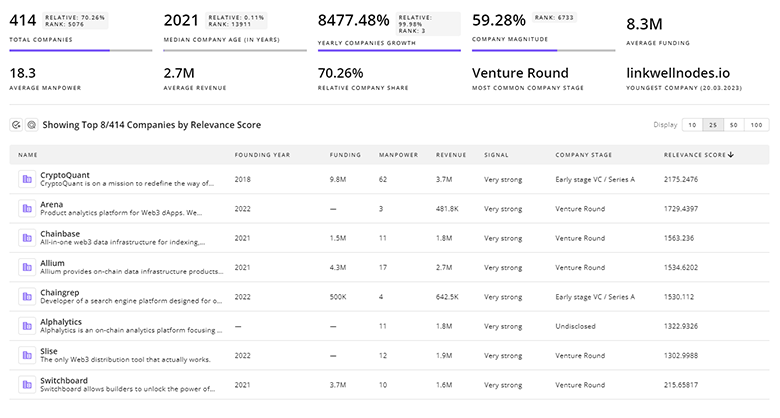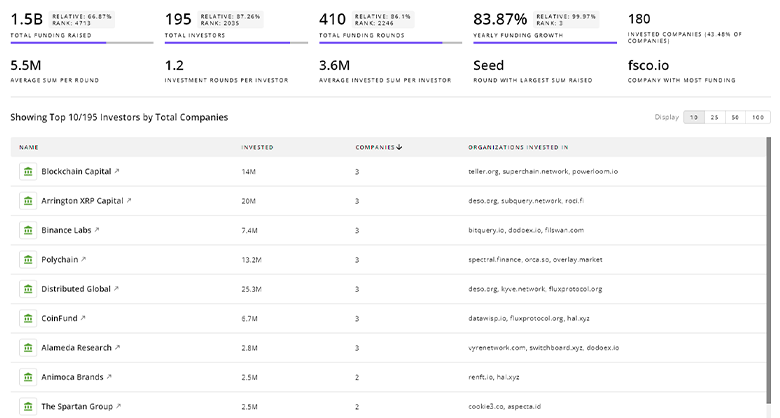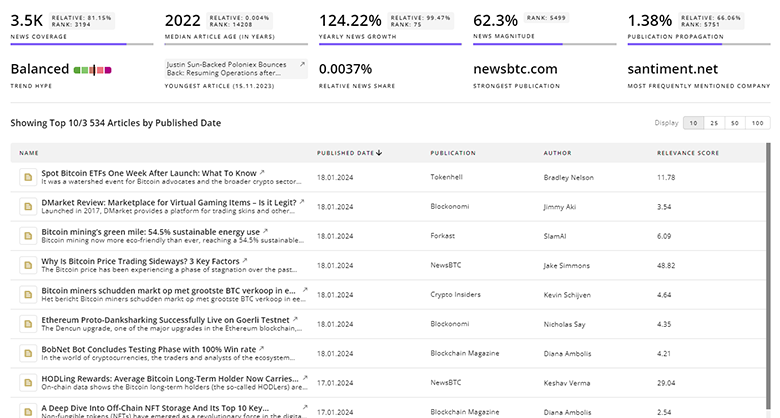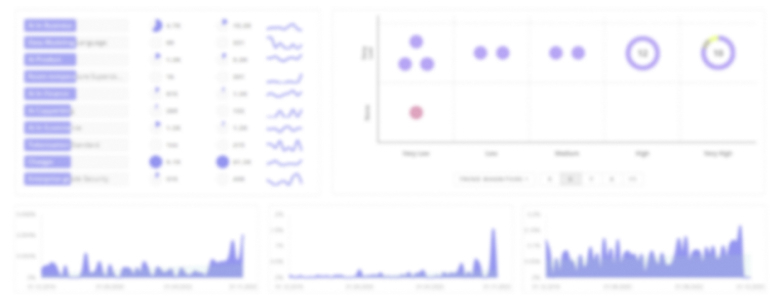
Brand Equity Report
: Analysis on the Market, Trends, and TechnologiesThe brand equity sector has shifted from an abstract marketing concept to a measurable business asset: the internal brand-equity data shows 1,717 companies operating on this topic and total funding raised of $6.67B, signaling substantive commercialization of measurement and platform solutions. This change pressures marketers and finance leaders to tie brand activities to revenue, to adopt AI-enabled measurement, and to prioritize emotional connection and trust as drivers of price premium and lifetime value.
This report was last updated 8 days ago. Spot an error or missing detail? Help us fix it by getting in touch!
Topic Dominance Index of Brand Equity
To identify the Dominance Index of Brand Equity in the Trend and Technology ecosystem, we look at 3 different time series: the timeline of published articles, founded companies, and global search.
Key Activities and Applications
-
- Brand-equity measurement and valuation — Firms build scorecards that combine consumer perception metrics with financial KPIs (price premium, revenue per customer) to quantify brand-driven cash flows and enable investment tradeoffs (Investopedia definition).
So what: Quantified brand metrics convert marketing from a cost center to a measurable value driver, which lets CMOs defend budgets with forecasted ROI. - Social-data forecasting and competitive intelligence — Platforms process social signals and meme dynamics to forecast short-term sales and event impact, turning earned media into leading indicators of market-share movement.
So what: Real-time social forecasting shortens the feedback loop between campaigns and revenue, enabling tactical shifts that protect short-term equity. - Community-driven advocacy and ambassador programs — Tools for managing ambassadors and UGC mobilize customers as acquisition channels and authenticity drivers, improving reach and retention with trackable ROI.
So what: Ambassadors scale trust more cheaply than paid media and raise marginal lifetime value of acquired customers. - Predictive brand technology and linkage to business outcomes — Predictive brand platforms map investments to expected enterprise value changes, letting marketing and finance collaborate on allocation decisions.
So what: Predictive linkage reduces subjective decision-making and increases accountability for long-term brand investments. - Experiential and immersive brand activation — Event and VR/AR experiences create emotional attachment and distinct memory structures that raise willingness-to-pay and advocacy (BeCore; experiential marketing practice overview).
- Purpose, ethics, and sustainability positioning — Brands that communicate credible social and environmental impact increase trust scores and protect premium positioning among value-sensitive cohorts.
So what: Purpose initiatives serve as risk-reduction for reputation and a differentiator when functional differences narrow.
- Brand-equity measurement and valuation — Firms build scorecards that combine consumer perception metrics with financial KPIs (price premium, revenue per customer) to quantify brand-driven cash flows and enable investment tradeoffs (Investopedia definition).
Emergent Trends and Core Insights
- Datafication of brand perception — Measurement shifted from periodic surveys to continuous, multichannel telemetry that combines social listening, sales signals, and behavioral data to produce dynamic brand indices.
So what: Continuous indices reveal inflection points earlier and enable short-cycle interventions. - AI-led predictive and content systems — AI drives both forecasting (brand value prediction) and content generation/personalization, creating integrated loops between measurement and activation (agentic content platforms (Brande.ai)).
So what: AI compresses the time from insight to action and increases the scale of personalization that supports higher willingness-to-pay. - Convergence of brand and finance — Companies demand models that translate brand movements into enterprise value and revenue forecasts, prompting the rise of tools that bridge marketing metrics with financial outcomes (valuation frameworks in practice).
So what: When brand managers can quantify expected cash-flow impacts, boards allocate strategic capital differently. - Real-time reputation risk management — Rapid social escalation of issues forces brands to integrate monitoring with customer care and crisis workflows to protect equity.
So what: Brands that shorten containment time limit long-term erosion of trust and price power. - Market concentration among top global brands — A handful of brands capture outsized brand value (e.g. top tech brands dominate rankings), raising competitive barriers for challengers and shaping where premium opportunities exist (Global brand rankings and valuations; U.S. leaders analysis (Statista U.S. brand values 2024)).
So what: Smaller brands must target niche differentiation, community-owned advocacy, or purpose-led claims to sustain premium positioning.
Technologies and Methodologies
- Predictive Brand Technology and AI analytics — Platforms that forecast brand value and simulate investment scenarios permit direct tradeoff analysis between short-term activations and long-term brand health (BERA).
- Intermix modelling and marketing attribution — Advanced econometric models allocate sales to channels and brand activities at granular levels to reveal the contribution of brand versus performance spend.
- Neuroscience and implicit-association testing — Implicit measures and neurometrics augment stated surveys to capture emotional resonance that predicts loyalty beyond rational descriptors (neuroscience studies referenced in the literature).
- Social listening plus sales-validated forecasting — Combining meme/netnography with point-of-sale correlations turns social buzz into quantitative sales signals (measurement frameworks overview (Drive Research measurement steps)).
- Brand asset management and distributed-brand platforms — Centralized DAMs and brand portals enforce consistency while enabling rapid, localized activation (Brandox; Ethos).
- Immersive experience stacks (AR/VR + analytics) — Toolchains that combine experiential production with attribution metrics to connect experience to downstream equity metrics.
Brand Equity Funding
A total of 139 Brand Equity companies have received funding.
Overall, Brand Equity companies have raised $10.9B.
Companies within the Brand Equity domain have secured capital from 383 funding rounds.
The chart shows the funding trendline of Brand Equity companies over the last 5 years
Brand Equity Companies
- eBrandValue — eBrandValue provides a social-data business-intelligence platform that forecasts sales and market-share impact by mapping social behavior and meme dynamics to purchase outcomes; its algorithmic forecasts have been validated against scan data and are used for real-time campaign ROI and crisis monitoring. eBrandValue targets rapid event-to-sales correlation, which makes it useful for FMCG and entertainment brands that need same-week visibility on activation impact. The product emphasizes influencer tracking and meme-based segmentation to reveal drivers of short-term shifts in perception.
- Brandbassador — Brandbassador operates an ambassador-management platform for e-commerce brands that automates campaign tasks, tracks ROI, and gamifies advocacy to turn loyal customers into acquisition channels; the company reports rich analytics and conversion tracking for ambassador-driven sales. Its model reduces reliance on paid influencer markets by scaling owned community activity. Brandbassador’s offering fits D2C brands that rely on repeat purchase economics and customer lifetime value optimization.
- Persona Partners — Persona Partners focuses on “Identity Loyalty,” aligning brand positioning to customer self-expression through research-led positioning and identity-driven strategy. The consultancy targets brands that need deeper emotional embedding in customer lifestyles rather than superficial messaging. Its approach translates into strategic frameworks and creative programs that raise affective loyalty and recommendation metrics. Persona Partners suits premium and lifestyle brands seeking long-term relational equity.
- Brandme — Brandme provides an AI-assisted brand-development platform that accelerates strategy, identity design, and asset production for startups and small teams, lowering time and cost of go-to-market brand work. The platform packages strategic templates and automated creative workflows so lean founders can access validated positioning and collateral. Brandme targets early-stage ventures that need predictable, testable brand systems to support customer acquisition experiments.
Identify and analyze 1.8K innovators and key players in Brand Equity more easily with this feature.

1.8K Brand Equity Companies
Discover Brand Equity Companies, their Funding, Manpower, Revenues, Stages, and much more
Brand Equity Investors
TrendFeedr’s investors tool offers a detailed view of investment activities that align with specific trends and technologies. This tool features comprehensive data on 461 Brand Equity investors, funding rounds, and investment trends, providing an overview of market dynamics.

461 Brand Equity Investors
Discover Brand Equity Investors, Funding Rounds, Invested Amounts, and Funding Growth
Brand Equity News
Stay informed and ahead of the curve with TrendFeedr’s News feature, which provides access to 3.0K Brand Equity articles. The tool is tailored for professionals seeking to understand the historical trajectory and current momentum of changing market trends.

3.0K Brand Equity News Articles
Discover Latest Brand Equity Articles, News Magnitude, Publication Propagation, Yearly Growth, and Strongest Publications
Executive Summary
Brand equity now sits at the intersection of measurement, activation, and finance: firms that translate perception into forecastable revenue secure stronger budget authority and shareholder clarity. The practical path forward requires three moves: instrument the brand with continuous, multichannel telemetry; apply predictive analytics that map brand actions to financial outcomes; and design activations that produce measurable emotional attachment (community, experience, or purpose). For practitioners, the immediate priorities are (1) integrate predictive brand platforms with sales and finance workflows, (2) shift a portion of campaign planning to rapid test-and-measure cycles that feed brand indices, and (3) align purpose claims with verifiable practices to protect trust and premium positioning. These steps make brand equity a governed, investable asset rather than a post-hoc explanation of success.
Interested in enhancing our coverage of trends and tech? We value insights from experts like you - reach out!










